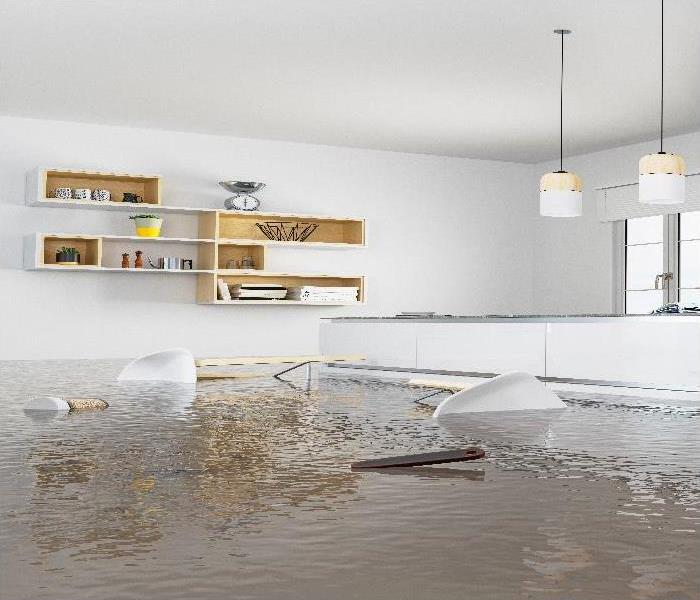Which Equipment Best Removes Standing Water After a Flood in New Haven?
6/28/2020 (Permalink)
Flood Damage in New Haven
Our SERVPRO team can help with useful extraction tools to make drying and cleaning efforts more efficient after flooding in your New Haven home.
Flooding can introduce many immediate threats to your New Haven home. Among the most severe and threatening of these, especially in natural flooding scenarios, is standing water. This pooling in areas of your residence can be challenging to remove without the right tools and approaches. However, our SERVPRO professionals can help with multiple options designed to manage this loss scenario quickly.
Despite how destructive flood damage in New Haven homes can be, many homeowners do not recognize the need for professional restorers as quickly as they should in many circumstances. The sooner that our experienced technicians can get to work on removing water and drying the house, the less damaging that migrating water and saturation can become. Mitigation and emergency services like extraction must begin as soon as our team arrives, and we have several approaches. Popular types of extraction tools include:
Pumps – With a submersible end that can generate a prime to pull standing water from a damaged area, these units are capable of moving thousands of gallons from damaged areas over brief periods.
Wet Vacuums – When water depths do not exceed two inches, wet vacuums and their various attachments can help to remove surface water and prepare the property for drying.
Weighted Extraction Tools – Carpeting can absorb high volumes of water before pooling begins on the surface. Weighted extraction units utilize the weight of our technicians to press the top layer and padding into the subflooring. The onboard vacuum removes moisture brought to the surface.
Are Submersible Pumps the Best Choice for Standing Water?
Submersibles are some of the more reliable and powerful tools in our water restoration inventory. The choice in which of these pumps suits the damage the best often falls to the present debris and solids in the standing water. Natural flooding can introduce substantial debris, silt, and other particulates that electric submersible pumps cannot easily pass, but that is more ideal for trash pumps and larger units like the extractor truck in our SERVPRO Green Fleet. Some of the most common choices for extracting substantial flooding in the house include:
Self-Priming Trash Pump - Trash pumps run on gasoline and diesel fuels, which can make them an ideal option where power is already limited, and other restorative devices can use it. These powerful extractors can pass smaller debris with a larger intake/discharge hose.
Electric Submersible Pump - These units are the standard for removing standing clean water in the house. When flooding occurs through breaches in the roof or openings in the house, we can extract thousands of gallons over a brief period with these capable units.
High-Pressure Pump - Similar in function to the electric pumps, high-pressure units can address a greater need for lift and head. These units cannot easily pass debris but can be excellent options for removing flooding in the basement, attic, or other areas that require an extended discharge.
When Do Professional Restorers Use Wet Vacuums?
With a manageable depth of two inches or less, the present water damage is still too considerable for time-efficient drying. Wet vacuums and their various attachments can help to finalize the removal of surface water. While these units can also be capable at greater depths and more substantial losses, when the standing water is enough to support the prime on submersible units, these have more power and a higher volume of output production.
What Are Weighted Extractors?
Water losses can often negatively impact many of the exposed materials in the house, and none can experience more of this damage than the flooring. Carpeting can get hit the worst, as it immediately absorbs migrating water and can become nearly fully saturated before showing pooling water on the surface. With clean water incidents where contamination is not a concern, it is often possible to dry and restore carpeted floors with the use of water removal tools and calculated drying approaches. Weighted extractors can have a role in this recovery, and these include:
• Stationary Units
• Ride-On Extractors
• Large Loss Recovery Tools
Flooding and its damages can spread quickly throughout your residence. Beginning extraction and drying efforts as soon as possible is an effective way to protect your home and its contents from irreparable damage. Give our SERVPRO of New Haven team a call today at (203) 234-1100.






 24/7 Emergency Service
24/7 Emergency Service